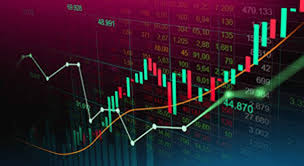
Mastering Forex Trading: Strategies, Tips, and Tools
Forex trading has become a popular activity for many traders around the globe. With the advent of technology and the easy accessibility of trading platforms, countless individuals are stepping into the dynamic world of currency trading. In this article, we will explore the essentials of forex trading, covering crucial strategies, common pitfalls, and the tools necessary for successful trading. Whether you are a newbie or a seasoned trader, understanding the forex market is crucial for achieving your financial goals. Embrace the journey of trading with [trading forex Trading Broker ID].
Understanding the Forex Market
The foreign exchange market, or forex, is where currencies are traded. Unlike stock markets, which are centralized exchanges, the forex market operates on a global scale, with trading occurring 24 hours a day, five days a week. This decentralized nature makes forex trading accessible to anyone with an internet connection.
Currency pairs are the heart of forex trading. Traders buy one currency and sell another simultaneously, making profits based on the fluctuations of currency pair values. The primary categories of currency pairs include major pairs (e.g., EUR/USD, USD/JPY), minor pairs, and exotic pairs.
Key Strategies for Successful Forex Trading
1. Technical Analysis
Technical analysis involves studying price charts and using various indicators to forecast price movements. Traders use tools like Moving Averages, Bollinger Bands, and Relative Strength Index (RSI) to identify trends and determine entry and exit points. Understanding chart patterns like head and shoulders, triangles, and flags can also provide insights into potential market shifts.
2. Fundamental Analysis
Fundamental analysis focuses on economic indicators, geopolitical developments, and other factors influencing currency values. Key indicators include interest rates, employment data, and GDP growth. Central banks’ announcements and international events can dramatically impact currency pairs. Staying informed through financial news and economic calendars is essential for traders employing this strategy.

3. Swing Trading
Swing trading is a medium-term strategy that involves holding positions for several days to take advantage of expected price movements. This approach requires patience and thorough market analysis, allowing traders to ride out short-term volatility while capitalizing on broader trends.
4. Day Trading
Day trading involves executing multiple trades within a single day, with positions being closed by market close. This strategy requires a solid understanding of market dynamics, quick decision-making, and the ability to manage risk effectively. Day traders often leverage technical analysis and rely on short-term market trends.
Common Pitfalls to Avoid in Forex Trading
1. Lack of a Trading Plan
One of the most significant mistakes traders make is entering the market without a clear trading plan. A well-defined plan outlines your trading goals, strategies, risk management rules, and evaluation criteria. It acts as a roadmap, helping you stay disciplined and focused, especially during volatile market conditions.
2. Overleveraging
Leverage allows traders to control larger positions than their account balance would otherwise permit. While it can amplify profits, overleveraging can lead to severe losses. It’s crucial to understand how leverage works and use it responsibly to protect your trading capital.
3. Emotional Trading
Trading can be an emotional rollercoaster. Fear and greed are two major emotions that can cloud judgment. Stick to your trading plan and avoid making impulsive decisions based on market sentiment. Developing a disciplined mindset is essential for long-term success.

Essential Tools and Resources for Forex Traders
1. Trading Platforms
Choosing the right trading platform is crucial. Look for features such as user-friendliness, access to a variety of technical analysis tools, charting capabilities, and competitive spreads. Popular trading platforms include MetaTrader 4 (MT4), MetaTrader 5 (MT5), and TradingView, each catering to different trading styles and preferences.
2. Economic Calendars
An economic calendar is a vital tool for any forex trader. It provides crucial information about upcoming economic events, including reports and announcements that could affect currency values. Knowing the release dates of important data helps traders prepare and adjust their strategies accordingly.
3. Trading Communities and Forums
Engaging with other traders in forums and communities can provide valuable insights and foster learning. Sharing experiences, discussing strategies, and asking questions can enrich your trading knowledge. Platforms like Reddit, Forex Factory, and various trading Discord channels are great places to start.
Conclusion
Forex trading offers enormous potential for profit, but it also comes with significant risks. By understanding the market, employing robust trading strategies, and utilizing essential tools, traders can navigate the forex landscape more effectively. The key to success lies in continuous learning, disciplined trading, and adapting to ever-changing market conditions. Whether you are trading full-time or exploring forex as a side venture, remember that patience and persistence are essential components of lasting success.
With the proper knowledge, tools, and mindset, anyone can become a proficient forex trader.
